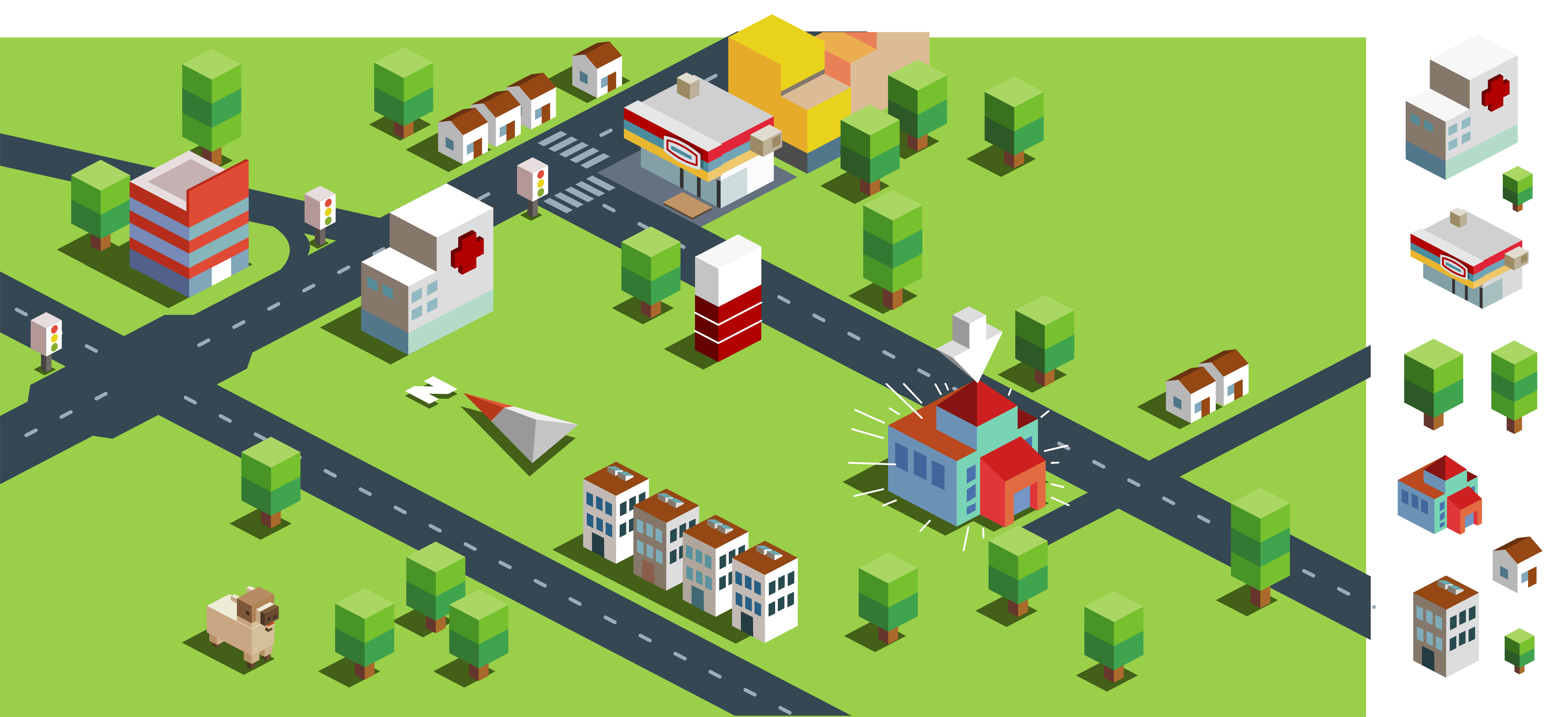Post: SimCity vs Smart Cities - Gamification of Urban Planning

“The video game SimCity is addictive because of the simplicity of its underlying model.” I got intrigued as soon as I read this from Townsend’s book Smart Cities: Big Data, Civic Hackers, and the Quest for a New Utopia (2013). Indeed, I grew up playing these simulation games, from SimCity, Roller Coaster Tycoon, to Animal Crossing, and I believe a lot of you did too. They are amazing - you get to effortlessly design your own world, through days (and possibly nights) of mouse clicking and button pressing.
I wonder why these games didn’t inspire more people to study city planning, because they are one of the reasons that got me into the profession. There were fun (and long) times that I spent experimenting with my roller coasters designs to raise riders happiness, moving police stations and firehouses around to get maximum coverage, and swimming in the ocean for an hour to earn more money from selling the sea creatures to Timmy and Tommy’s. It would be so cool to influence a city’s design in real life, the 17 years old me thought.
There are lots of narrow alleys in Beijing, which a lot of locals took advantage of for informal parking, making the narrow alleys even harder to navigate. During high school, I did an independent research project on parking problems. Focusing on one such alley, I examined how parking problems originated and how they could be alleviated. I referenced a parking policy handbook and found a table documenting how parking spots should be designed. I proceeded by measuring the informal parking spots and finding them to be incorrect. I concluded my projects by calling for better policies and law enforcement as well as recommending smart parking garages. I could study city planning, the 18 years old me thought.
I thought I would be taught lots of established, successful policies and guidelines to resolve challenges and problems in cities. Then I can develop a city like how players can develop their own islands in Animal Crossing. However, that was not the case. I spent much more time studying established, unsuccessful cases and analyzing how to improve them. That frustrated me for a while, because I felt like I did not learn authoritative planning methods. In fact, I realized that there may not be objective planning methods at all.
The world that the simulation games created are simulations. No matter what advanced mathematical models and sophisticated algorithms they applied to simulate real-world phenomenon, they are always approximations. Unlike subjects that are hard sciences, there is no theory in city planning as a social science that holds truth universally so far. Cities are simply too complicated a system for any genius to simulate accurately to the full extent. (I just finished an essay on the theory and practice of smart cities. If I got a good grade endorsing my understanding of the topic, I might blog about it later.)
“Duh,” you might be thinking right now. “Of course I’m not going to confuse the real world with games.” But what if the real world is turning into games? Think about it - What are your reactions when you heard about “smart cities”? Is it a utopian city where everyone served by robots living happily ever after, or is it a dystopian city where a lot of bad things can happen? The ideology of scientific cities might be influencing your perception of your life without you noticing, like how I anticipated learning “game-winning” city plans in the real world. Especially, with the rapid development of technologies and propagation of the “smart cities” concept, you see and hear news about technology breakthroughs telling you “something can fix some problems” and “something will make your life better”. It is important for you to know that, science and technology cannot fix all problems. At least not sometime soon. And they might create problems, as they always have.
On an individual level, when a new, shiny gadget comes out, think about why you need it before you get too invested in it. For city planning, there are a lot more for policy-makers to look into. IBM’s former Vice President Banavar said, “I strongly believe we should give them [mayors in municipal governments] the right tools and the right data to be better managers,” as IBM exported their new technology and management playbook to the rest of the world (Townsend, 2013). However, city management is neither business management nor science experiment. Can new technology and management playbook guarantee a smart city? The answer is obvious. Relating back to my parking project, parking policies could be widely adopted at first but become outdated later. Informal parking is illegal and annoying for people driving by, but it is a forced solution for those who need parking. Planners can recommend smart garages to alleviate the problems in the near future, but eventually, new challenges will occur and the plans will need to be updated.
Currently, there are trends of gamification of cities, as I have learned this semester. PokemonGo, a 2016 game that integrated reality with digital features, could be used to gather people’s opinions towards public spaces. Collab, a website being a part of SidewalkLab’s Quayside project, enables citizens to design communities like playing a simulation game. There are also apps that could potentially reward citizens for following social-distancing guidelines by tracking their movements. There are as many opportunities as there are risks, giving planners lots of space to make improvements. Where do you stand for smart cities?
Reference
Townsend, A. M. (2013). Smart Cities: Big Data, Civic Hackers, and the Quest for a New Utopia. W. W. Norton.


